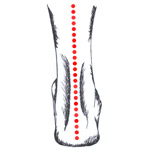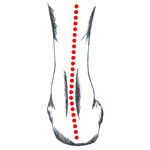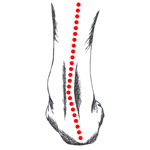So, another few commonly asked question up at the shop are, what should I be eating, and how often should I be eating during exercise. These can be somewhat tricky questions to answer since no one at the shop is a sports medicine physician or dietician but most of us have been competitive amateur athletes or still are and we have some cycling coaches working up at the shop so we asked those guys for some advice. So two of our employees put their heads together (Andy Gibbs has been coaching for around six years and Justin Allen has a M.S. Ed in Kinesiology from SIUE and has been coaching for four years) and came up with some good suggestions.
For starters when thinking about eating to get ready for exercise or competition you need to think of food as fuel, it still needs to taste good to you, but now that tasty food has one sole purpose. Because you rely on your food for performance, you are going to need to get a bit scientific with your pre, during, and post exercise meals, so you are going to have to do some quick calculations to determine how many grams of carbohydrates you need to eat. First and foremost your meals need to provide you with adequate carbohydrates, be well tolerated by you, easily digestible, and if you are eating prior to exercise, the meal should occur three to four hours before you exercise or compete.
So why the emphasis on carbohydrates? Carbohydrates are your body’s main energy nutrient source; they digest easier, and are absorbed by your body faster than protein or fat. Furthermore, your body stores around 2,000 calories of glycogen in the liver and muscle and when you eat carbohydrates your body will replenish these stores appropriately. Also, when thinking about a pre-exercise or competition meal carbohydrates are favored over a protein heavy meal because protein breakdown in your body actually facilitates dehydration which is exactly what you don’t want.
So how much should you be eating before you exercise and how long before you go out? Thankfully this one is not too complicated and just requires a quick calculation. You should be eating 3-5 grams/ kg of body weight with the goal being a total of 150-300 grams of carbohydrates. To calculate your weight in kilograms simply take your weight in pounds and multiply by .45, for example a 180 pound individual would be 81 kilos. You would then want to eat this meal three to four hours before you exercise and the meal can be in solid or liquid form. We would recommend experimenting between a solid or liquid meal so you can determine what works best for you. We would also recommend that you do eat a bit of protein so maybe a bowl of cereal or a bagel with peanut butter but don’t go crazy with a full steak and egg breakfast. The key to a pre-exercise meal is really the timing of it. If you eat within an hour of exercise your workout or race performance may be hindered by rebound hypoglycemia meaning, after you eat there is a spike in insulin causing your blood sugar/glucose to dip for a brief period of time. If you are exercising during this dip in blood sugar/glucose your performance will be affected because you are robbing your body of its primary fuel source during this time period.
The question of whether you should be eating anything while you are exercising really depends on how long you are going to be out there. If you are exercising for under 1 to 1.25 hours than eating will have a minimal effect because it is going to take around 20 minutes for what you eat to have an effect on you. For any exercise over that time period and especially a race it is a good idea to have some type of calorie supplementation, unless you are working out specifically to lose weight, then your goal for that workout is weight loss as opposed to performance. There are several ways to take in additional calories while exercising. An easy way is a gel packet, these packets usually have around 100 calories, they come in multiple flavors, and countless numbers of companies make them (Hammer, GU, Cliff). They are easily digestible and should be taken with some water to facilitate the digestion process; they work especially well for runners because of their small size. You can also drink some type of sports drink or drink mix, these will also contain important electrolytes to help keep you going. Many cyclists will also eat solid foods in the form of bars (Cliff Bars, Powerbars) or special jelly beans (Sportbeans) and even special gummy chews. The solid foods are typically well tolerated by cyclists because unlike running your body is not being jostled around, some runners shy from solid foods and stick with the gels but only trial and error will help you determine what works best for you.
After exercise it is also important to think about refueling your body with energy so you should aim for eating 50-75 grams of carbohydrates every two hours up to 500 grams. This method is preferred over one very large meal and does a better job of refueling your body. The first 30-45 minutes after you exercise is very important for recovery because your body will readily take up what you put into it, so think of taking in a mix of carbohydrate and protein at about a 1 gram of protein to 3 or 4 grams of carbohydrates, ironically enough chocolate milk is great for this.
Really the key to nutrition when it comes to performance is to change your mind set when eating. You need to think of the food you eat as the fuel your body needs to perform the task if are asking of it. So think about good quality foods; lean meats, fruits, vegetables, nuts etc… these high quality foods will allow your body to perform at an optimal level. Like a professor of mine always said if you put garbage into your body then you will probably get garbage out of it.


